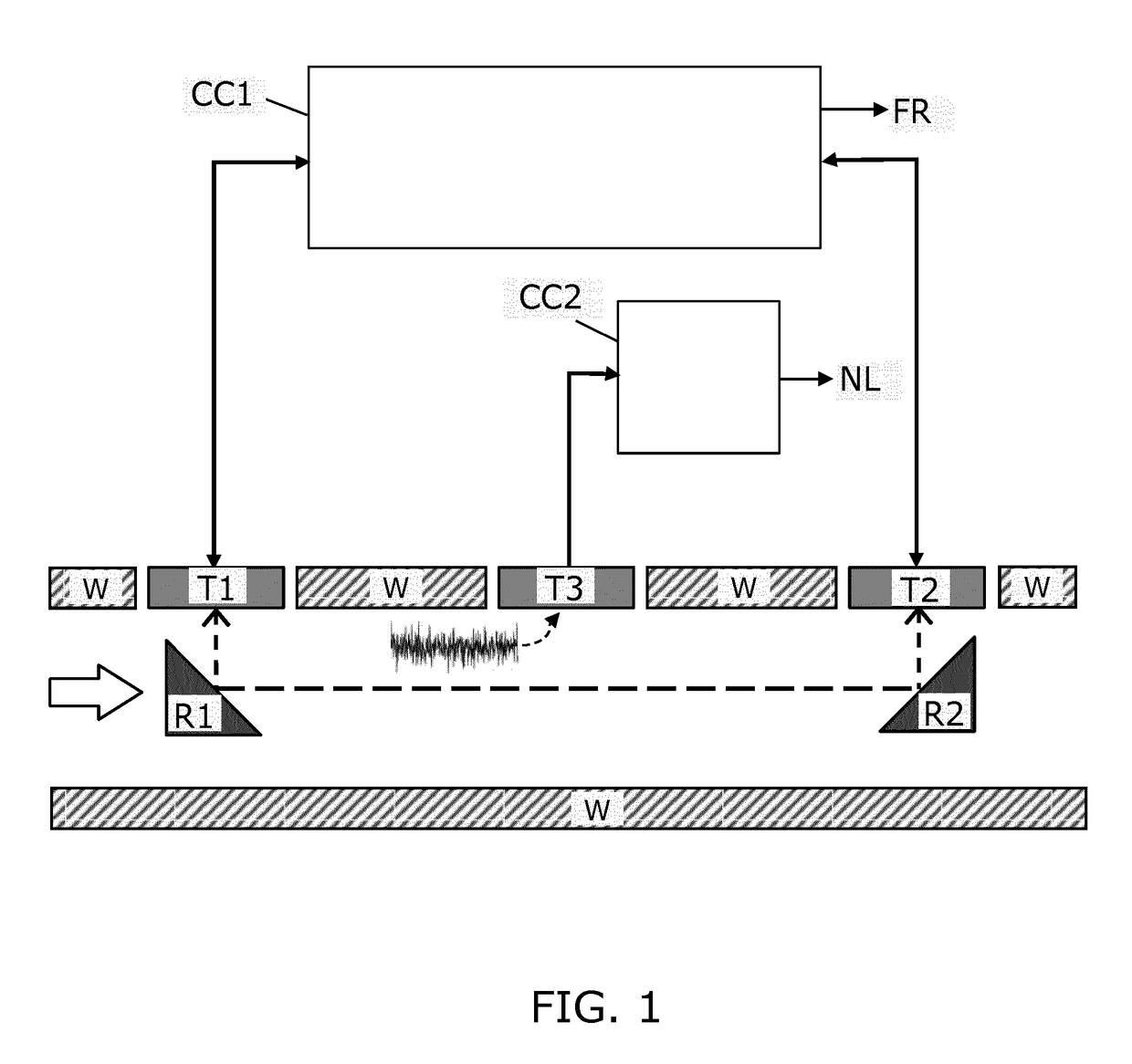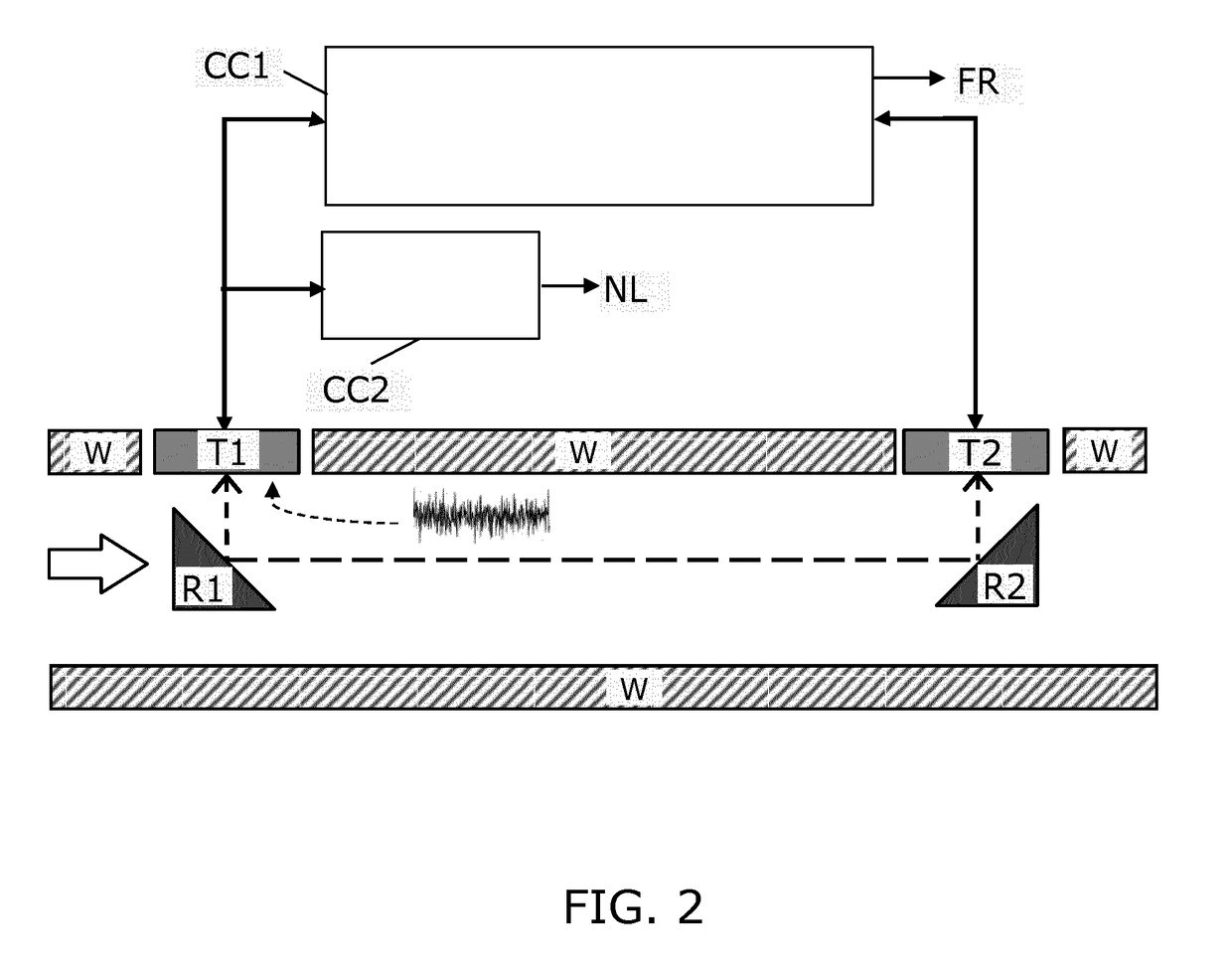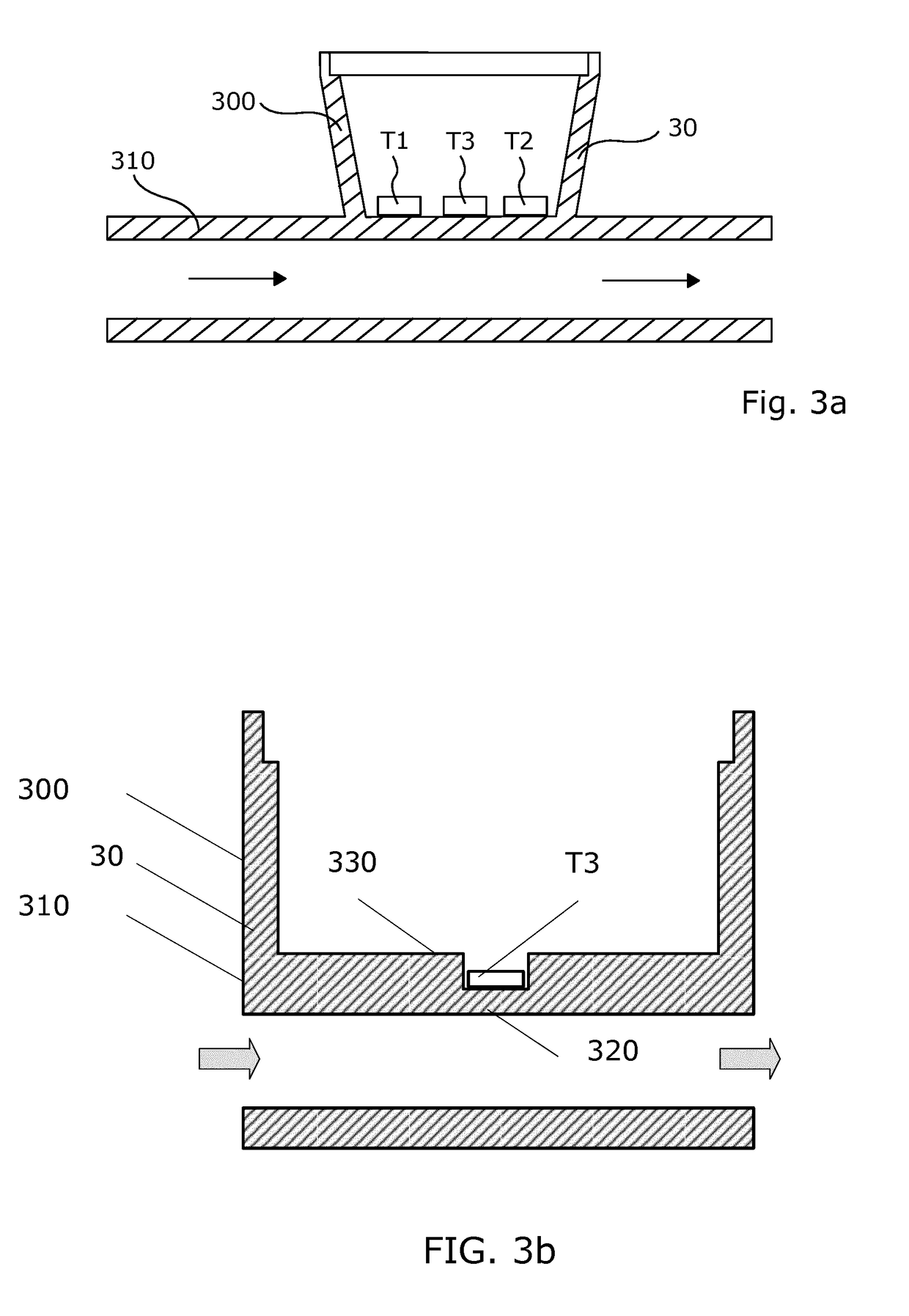Fluid consumption meter with noise sensor
a technology of acoustic noise and a meter, which is applied in the direction of tariff metering apparatus, processing detected response signals, sustainable buildings, etc., can solve the problems of reducing the efficiency of heating at the consumer site, increasing energy consumption by the distributor, and monetary loss to the whole community, so as to reduce the amount of data to be transmitted, facilitate processing, and improve the sensitivity of such monitoring systems
- Summary
- Abstract
- Description
- Claims
- Application Information
AI Technical Summary
Benefits of technology
Problems solved by technology
Method used
Image
Examples
Embodiment Construction
[0085]FIG. 1 shows a consumption meter embodiment wherein two flow transducer T1, T2, in the form of a pair of piezoelectric ultrasonic transducers, are arranged in the wall W of a flow tube in which fluid flows in the direction indicated by the large arrow to the left. The two transducers T1, T2 are operated by a flow measurement sub-circuit CC1 to transmit and receive ultrasonic signals via the transducers T1, T2, to be able to generate a flow rate signal indicative of the fluid flow rate, FR based on known ultrasonic transit time measurement techniques. In the shown embodiment, reflectors R1, R2 serve to direct the ultrasonic signals (dashed arrows) along the fluid flow in the flow tube.
[0086]The consumption meter further comprises a dedicated noise level sensor T3 configured for measuring vibro-acoustic signals in the flow tube or of the fluid therein. In the illustrated embodiment the sensor is a third separate transducer T3 located in the flow tube wall between the first and s...
PUM
| Property | Measurement | Unit |
|---|---|---|
| frequency | aaaaa | aaaaa |
| frequency | aaaaa | aaaaa |
| frequency | aaaaa | aaaaa |
Abstract
Description
Claims
Application Information
 Login to View More
Login to View More - R&D
- Intellectual Property
- Life Sciences
- Materials
- Tech Scout
- Unparalleled Data Quality
- Higher Quality Content
- 60% Fewer Hallucinations
Browse by: Latest US Patents, China's latest patents, Technical Efficacy Thesaurus, Application Domain, Technology Topic, Popular Technical Reports.
© 2025 PatSnap. All rights reserved.Legal|Privacy policy|Modern Slavery Act Transparency Statement|Sitemap|About US| Contact US: help@patsnap.com



